1.8K Views
Small Batch, Gluten-Free Cinnamon Rolls

by
Arianna Litrenta
(IC: blogger)
8 Rolls
55 min
There are few things better than homemade cinnamon rolls. This small batch recipe of gluten-free buns is sure to be an instant family favorite!
An Ode to the Cinnamon Roll
Whether you’re enjoying them on Christmas morning or a casual midweek breakfast, there’s truly no bad time for cinnamon rolls. In my house, cinnamon rolls were reserved for three special occasions: the first day of school, my birthday and Christmas. Like many, I grew up on the Pillsbury Cinnamon Rolls. It was the best way to start each of these special days and was one of my favorite traditions. The only time these cinnamon rolls were enjoyed outside of those days was the morning of my college graduation. So, it’s safe to say that cinnamon rolls hold a very special place in my heart.When I went gluten-free in 2018, one of the things I missed most was cinnamon rolls on Christmas morning. While I looked for gluten-free options, they were few and far between. Even the gluten-free bakeries couldn’t replicate the cinnamon rolls I grew up on. As I got more comfortable with gluten-free baking, I tried to create the perfect gluten-free cinnamon roll. The perfection was defined by the texture of the cinnamon roll. Was it fluffy? Soft? Buttery?After many, many attempts and failed doughs, I finally have my perfect recipe! These Small Batch, Gluten-Free Cinnamon Rolls are fluffy, soft, buttery, and everything in between. Their texture mimics that of non-gluten free cinnamon rolls so well that family members didn’t know the difference! This recipe makes eight cinnamon rolls; which, is great for a small family! It’s a must make anytime of year!
An Ode to the Cinnamon Roll
Whether you’re enjoying them on Christmas morning or a casual midweek breakfast, there’s truly no bad time for cinnamon rolls. In my house, cinnamon rolls were reserved for three special occasions: the first day of school, my birthday and Christmas. Like many, I grew up on the Pillsbury Cinnamon Rolls. It was the best way to start each of these special days and was one of my favorite traditions. The only time these cinnamon rolls were enjoyed outside of those days was the morning of my college graduation. So, it’s safe to say that cinnamon rolls hold a very special place in my heart.When I went gluten-free in 2018, one of the things I missed most was cinnamon rolls on Christmas morning. While I looked for gluten-free options, they were few and far between. Even the gluten-free bakeries couldn’t replicate the cinnamon rolls I grew up on. As I got more comfortable with gluten-free baking, I tried to create the perfect gluten-free cinnamon roll. The perfection was defined by the texture of the cinnamon roll. Was it fluffy? Soft? Buttery?After many, many attempts and failed doughs, I finally have my perfect recipe! These Small Batch, Gluten-Free Cinnamon Rolls are fluffy, soft, buttery, and everything in between. Their texture mimics that of non-gluten free cinnamon rolls so well that family members didn’t know the difference! This recipe makes eight cinnamon rolls; which, is great for a small family! It’s a must make anytime of year!
The History Behind the Swirl Is there anything better than warm cinnamon rolls right out of the oven? Cinnamon rolls are one of the ultimate comfort foods. It has countless names from cinnamon roll, swirl or bun. While the name may differ and countless recipes have evolved, the core ingredients remain the same. The sweetness of the cinnamon combined with the fluffy dough and sugary glaze is nothing short of the perfect bite.Have you ever wondered where the cinnamon roll came from though? Did you know that they supposedly originated from Sweden? This sweet bun is a staple in Scandinavian baking and dates back to the 17th century. The cinnamon roll then made its way over to America, where it became popular in the 1950’s. The main difference between the Swedish version and America’s is that ours are loaded with butter and sugar, while cardamom is used in Sweden.Today, there are so many different versions of cinnamon rolls. Even in America, there are some cinnamon rolls that have honey and raisins. Some have molasses and brown sugar in the filling. And of course, the internet is home to every version from pumpkin to gingerbread cinnamon rolls. All this to say that the cinnamon roll is not only very popular but a staple across countries.
The Elements of the Gluten-Free Dough I’ll be the first to admit that gluten-free baking isn’t always the easiest. The lack of gluten, which binds ingredients together, means a replacement is needed. While xanthin gum is often used as an effective thickening agent, emulsifier and stabilizer- sometimes you need a helping hand. After much research (and trial & error), I found that Psyllium Husk Powder was just what my gluten-free dough needed! Psyllium Husk Powder acts as a binder; which, gives gluten-free bread dough the elasticity and flexibility that it needs to actually knead and shape without breaking. This also allows the cinnamon rolls to rise similar to regular baked goods, and bake without cracking.While psyllium husk powder was a key ingredient in making the perfect gluten-free dough, flour is another key component. If you’ve visited my blog before (thank you!), then you know I’m a huge fan of Bob’s Red Mill Gluten-Free 1-to-1 Baking Flour. While I tried other gluten-free blends and gluten-free all purpose flours, I kept coming back to my good ol’ reliable baking flour. I love this baking flour because is so light and soft; two things that are a must when it comes to the texture of cinnamon rolls! Plus, it already has xanthin gum in it, so no need to add more. We will also be using a bit of tapioca flour, a starchy flour that is also a thickening agent!Finally, the yeast. Like breads, cinnamon rolls need time to proof before baking. Proofing is a process in baked goods when the dough is allowed to rest in a warm environment before baking. During this time, the dough rests and rises (typically, doubling in size). In order for baked goods to rise effectively, you need yeast. For this recipe, I used Fleischmann’s Active Dry Yeast. This yeast is commonly used to for sweeter bread recipes (or in this case, cinnamon rolls) and yields a richer flavor.
Making the Perfect Dough We’re going to pick up where we left off… with the yeast. Yeast needs time to activate before it can be incorporated into a recipe. To activate the yeast, we will need sugar, a packet of active dry yeast, and warm milk. Did you know that yeast is a living organism and needs food to thrive? Luckily, sugar provides the perfect food source for the yeast to thrive and activate. Even with the right ingredients, yeast can be temperamental. So, follow these steps to ensure success:
- Warm the milk in a glass container in the microwave for 40-45 seconds.
- Once warm, add a tablespoon of sugar and stir to dissolve.
- When the milk is 110 degrees, add the packet of active dry yeast and stir for a few seconds. Ensure the milk is not warmer or colder than 110 degrees. The yeast needs a warm environment to thrive, but if the milk is too hot it will die.
- Allow the yeast to sit for 10 minutes to activate. When the yeast begins to activate, it will give off a wheat-like aroma that may smell like beer. It will also look foamy on top.
The Key to Perfect Proofing This is third most important step in baking gluten-free cinnamon rolls. Like the yeast, if proofing fails (the dough doesn’t rise), then we will have to start over. Luckily, there are a few simple tips to avoid that!
- Use a warm, greased metal or glass bowl. I like to use a glass bowl and to warm the bowl, I microwave it for 35 seconds or run it under warm water. Then, I grease the inside of the bowl to prevent the dough from sticking.
- Proof in a warm spot. I like to proof my dough in a sunny spot, but the oven will work too. If you don’t have a proofing setting, preheat your oven to 200 degrees Fahrenheit. Once it reaches the desired temperature, turn off the heat and set the oven to “keep warm”. Then, place the greased bowl in the oven.
- Cover the dough with a tea towel or Saran Wrap. I like to use Saran Wrap, but that’s just my personal preference.
- Give the dough enough time to rise. You need to proof the dough for at least an hour, preferably an hour and a half. This will ensure the dough has time to double in size.
How to Roll & Slice After proofing, you should have a dough that is doubled in size and is soft. Before you begin working on the dough, first dust a workspace (cutting board or marble counter) with flour to prevent the dough from sticking. Then, oil your hands to transfer the dough to the prepared work space. If the dough is sticking to your hands, add one tablespoon of flour at a time to the dough. This will ensure that you don’t over flour the dough. Work the added flour into the dough until it no longer sticks. Once the dough has the desired consistency and has been kneaded, it’s time to roll out the dough!Sprinkle flour over the dough, then use a rolling pin to gently roll the dough into a rectangle. The dough should be about 1/4″ inch thick and 10″ x 14″ long. Make sure you don’t roll the dough too thin! If the dough isn’t as long as instructed, that’s okay. It’s more important to ensure the dough is the right thickness. Before we sprinkle it with a cinnamon sugar mixture, the dough first needs to be buttered. Melt a stick of butter and then allow it to cool to room temperature. Next, use a silicone brush to spread a thin layer of butter evenly across the dough. Then, combine cane sugar, brown sugar, cinnamon, nutmeg, and a pinch of salt in a small bowl. Use a spoon to evenly distribute the mixture across the dough.Now it’s time to roll and slice! While many recipes instruct you to first roll the dough and then slice, I like to do the opposite. With a sharp knife or pizza cutter, cut eight 1/2″ to 3/4″ strips. As much as possible, make sure the strips are even so that the cinnamon rolls will bake evenly. Once you have your strips, take one end and begin rolling to the other side. You do not need to roll the dough as tightly as possible. Just roll the dough tight enough so that it doesn’t come undone. Once you have rolled the right strips of dough into a cinnamon roll, place each one in a grease pie tin. Arrange each roll next to one another. If there is a little space between them, don’t worry as it will get filled!
Before We Can Bake We Must… If you guessed rest & rise again, then you’d be right! Now that the cinnamon rolls are rolled and arranged in the pie tin, we need to give them another thirty minutes to rest. Like proofing before, cover the rolls with Saran Wrap or a tea towel and place in a warm area. During this time, each roll will spread ever so slightly and fill up any empty space in the pie tin. After the thirty minutes, the rolls should look slightly fluffier. Finally, we can bake the cinnamon rolls!Bake the cinnamon rolls at 350 degrees Fahrenheit for 25 minutes. At the halfway mark, turn the pie tin 180 degrees so that the rolls that were in the back of the oven are now in the front. This will ensure each roll bakes evenly. After the allotted time, the rolls should be golden brown on top! Remove from the oven and allow them to rest for a few minutes.The final step of this recipe is choosing whether you want to ice or frost the cinnamon rolls. If you love the classic cinnamon rolls (like the Pillsbury version), I would go with the icing. However, if you’re looking for a richer option, then the cream cheese frosting is for you! Either way, you can’t go wrong with how you finish off these delicious gluten-free cinnamon rolls.
Small Batch, Gluten-Free Cinnamon Rolls
Recipe details
Ingredients
For the Dough
- 1 cup warm milk
- 1/3 cup + 1 tablespoon granulated white sugar
- 1 packet active dried yeast (2 1/4 teaspoons)
- 2 1/4 cups gluten-free baking flour (I used Bob’s Red Mill 1:1 Gluten-Free Baking Flour), plus more for dusting
- 1/3 cup tapioca flour
- 2 teaspoons baking powder
- 1 1/2 teaspoons psyllium husk powder
- 1/2 teaspoon salt
- 1/4 cup unsalted butter, melted and cooled
- 1 room temperature egg, whisked
For the Cinnamon & Sugar Layer
- 1/3 cup unsalted butter, melted and cooled
- 1/4 cup white sugar
- 1/4 cup brown sugar
- 1 1/2 tablespoons cinnamon
- 1 teaspoon nutmeg
- Pinch of salt
For the Cream Cheese Frosting (optional, can do icing instead)
- 8 oz. cream cheese, room temperature
- 1/2 cup unsalted butter, room temperature
- 1 1/2 cup powdered sugar, sifted
- 1/2 cup plain Greek yogurt
- 1 teaspoon vanilla extract
- Pinch of salt
For the Icing (optional, can do frosting instead)
- 1 cup powdered sugar
- 1 tablespoon milk, warm
- 1/2 teaspoon vanilla extract
Instructions
- For the Dough
- Heat the milk in a glass container in the microwave for 40 seconds
- Pour one tablespoon of sugar into the milk and stir until dissolved
- When the milk is lukewarm (110 degrees), add the packet of active dried yeast and stir
- Allow the yeast mixture to sit for 10 minutes to activate. When activated, it will foam on the top and give off a wheat-like aroma.
- In a medium sized bowl, combine the two flours, psyllium husk powder, baking powder, and salt. Then, set to the side.
- Add the sugar, melted butter and whisked egg to a large bowl on a stand mixer
- Use a paddle attachment on medium-low speed for one minute to combine the ingredients
- Once the yeast mixture has activated, pour it into the stand mixer and mix again to combine
- Sift the dry ingredients to a stand mixer, half at a time and mixing on medium-low speed between
- Mix for five minutes until a smooth dough forms. The dough should be soft but not overly sticky.
- Switch out the paddle attachment for the dough hook and mix on medium-low speed for five minutes. You may have to stop the mixer halfway through and scrape down the sides of the bowl with a spatula.
- Then, transfer the dough to a glass bowl that has been greased and warm (I like to put my bowl in the microwave for 25 seconds or wash it under warm water).
- Cover with plastic wrap or a tea towel and allow to sit in a warm area to rise for an hour and a half (the dough should double in size during this time)
- Dust a work surface with flour, then oil your hands and place the dough on the prepared surface
- If the dough is sticky, add one tablespoon of flour at a time until you can knead it without the dough sticking to your hands
- Knead the dough into a ball, then sprinkle flour on top of the dough
- Use a rolling pin to roll out the dough into a rectangle that is 1/4″ thick and roughly 10 x 12″ long
- For the Cinnamon Sugar
- Melt the butter and allow to cool before using a silicone brush to lightly brush the rectangle of dough.
- In a bowl, combine the sugars, cinnamon, nutmeg, and salt
- With a spoon, sprinkle the cinnamon sugar mixture evenly across the buttered dough
- Use a sharp knife or pizza cutter to cut the dough into eight 1/2″-3/4″ strips
- Carefully roll each strip (roll tight enough so that it stays together but not too tight)
- Place each uncooked cinnamon roll in a greased 9″ pie plate
- Cover the pie plate with plastic wrap or a tea towel and set somewhere warm to rise for 30 minutes
- During the last 10 minutes, preheat the oven to 350 degrees Fahrenheit
- After 30 minutes, brush the top of each roll with melted butter then place in the oven to bake for 25 minutes (rotate the plate at the halfway mark)
- Once the rolls are golden on top, remove from the oven and allow to cool for 10 minutes before frosting or icing
- For the Cream Cheese Frosting
- In a medium-sized bowl, combine the room temperature cream cheese and butter with an electric mixer on low speed until smooth
- Then, sift in the powdered sugar and mix again to incorporate
- Add the plain Greek yogurt, vanilla extract and pinch of salt
- Mix again on low, then refrigerate for 10 minutes before frosting
- For the Glaze
- Combine the sugar, almond milk and vanilla extract in a small bowl
- Whisk until smooth
- Drizzle the glaze over the cinnamon rolls and enjoy
Tips
- To warm up the cinnamon rolls, place in the microwave for 30 seconds.

Want more details about this and other recipes? Check out more here!
Published December 18th, 2022 7:57 PM



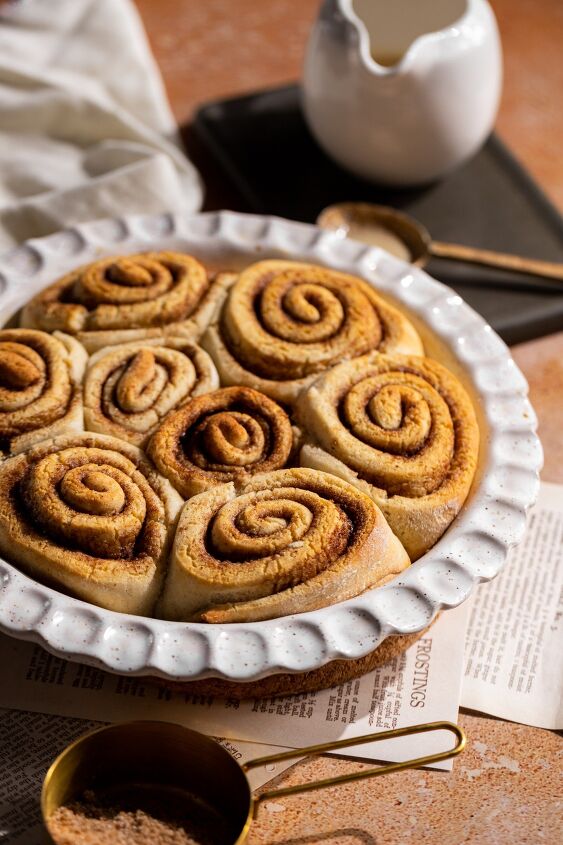






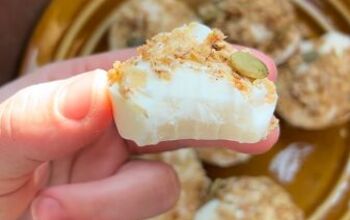
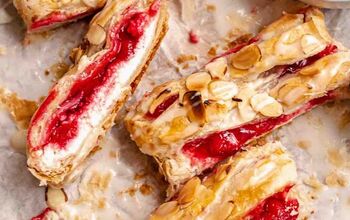
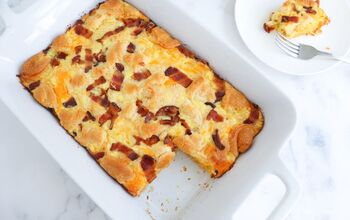
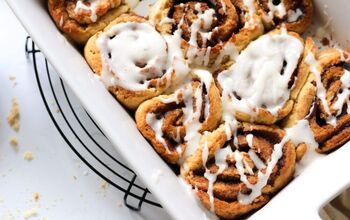
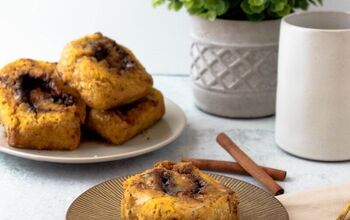
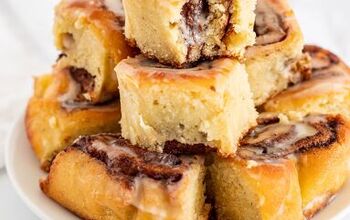
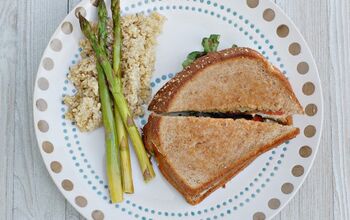
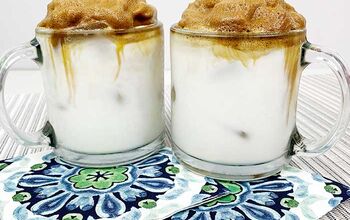
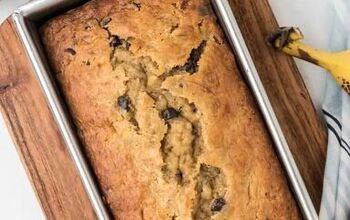

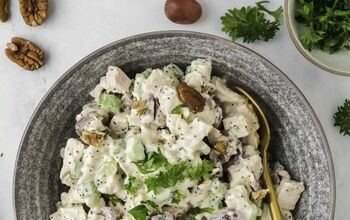

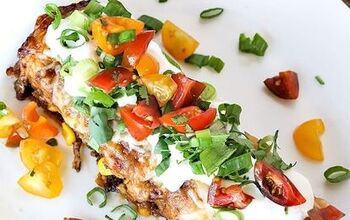


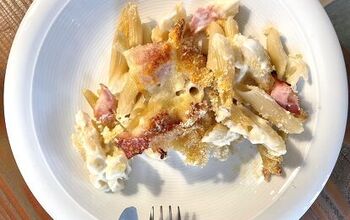


Comments
Share your thoughts, or ask a question!
This recipe seems really long and the procedure is way too long. Or so it seems to me.